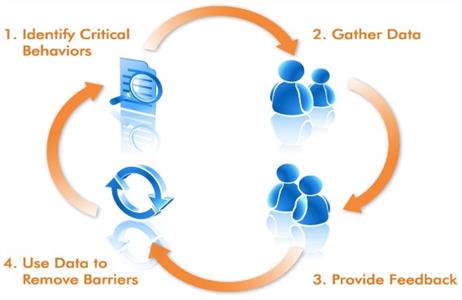By: Neil Spaeth, Safety Consultant
Sometimes when we are faced with continuous and repeating minor injuries and illnesses, we often are able to identify the root cause and prevent them from occurring again through the implementation of programs, or the changing of a policy or procedure. Why have the statistics for serious injuries and fatalities been consistent for years? Research has shown that the difference between fatal and less severe injuries is due to safety practitioners treating every incident in the same manner. As a result, there has been an increased focus to the potential severity of incidents, first aid cases, and near misses. This article will dig into the benefits of implementing a behavior-based safety program in order to help understand the meaning behind the word “potential.”

Utilizing Behavior-Based Safety
Behavior-based safety has been proven to reduce overall unsafe practices, but can this be applied to incidents that have the potential to be serious or fatal? The simple answer is that yes it can, if it has the necessary elements included in it. While a behavior-based safety program will not be able to identify every potential serious injury or fatality, it can be implemented in a way to ensure that each level of a company is involved and leading indicators are actively identified prior to beginning high hazard work.
- Observation Sheets/Cards should include SIF (serious injuries and fatalities) potential
Often times, observation cards do not include how to treat a potential SIF situation. Observation cards must include environmental conditions, as well as who or what should be identified in order to create a management change to the process.
- Training
During training, observers should be taught the proper way to identify a potential SIF task. This will ensure observers know the right questions to ask in order to determine if a gap in the process is evident.
- Choose the right observers
Behavior-based safety can become stale very quickly. To prevent this, choose multiple work groups ranging from upper management to line-level employees. A beneficial practice is to rotate observers weekly, monthly, and quarterly, in order to involve everyone and have a number of eyes on the same task in order to identify gaps. This will also speed up the process of implementing cultural change throughout a work group.
- Use your data
Your data will be your best friend. Use this to identify areas that should be improved or further researched.
Evidence shows that while not all potential SIF events will be detected using behavior-based safety, we can use the data to detect the potential in order to analyze high hazard tasks with a different method. Using this will help your company initiate a well-rounded safety program as it relates to identifying pre-cursors, environmental factors, and leading indicators.
References:
Mangan, Mike. “Safety in Practice: Applying Behavior-Based Safety to Serious and Fatal Injury Prevention.” Dekra Insight.
Related Topics: Behavior Based Safety, SIF, Monthly Safety Topics, Safety Articles